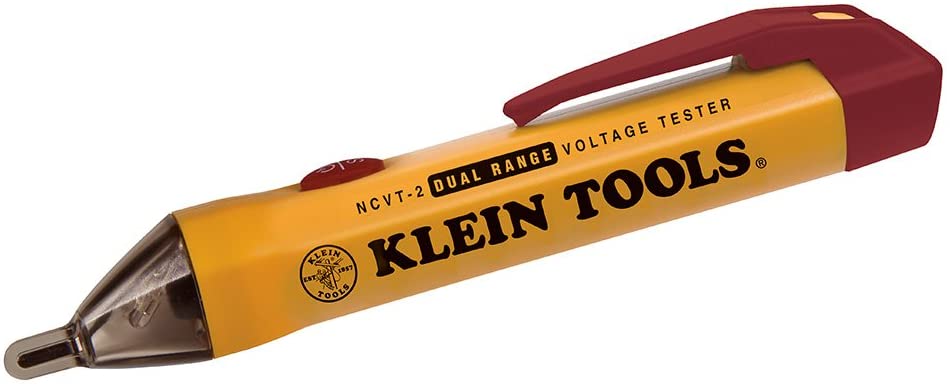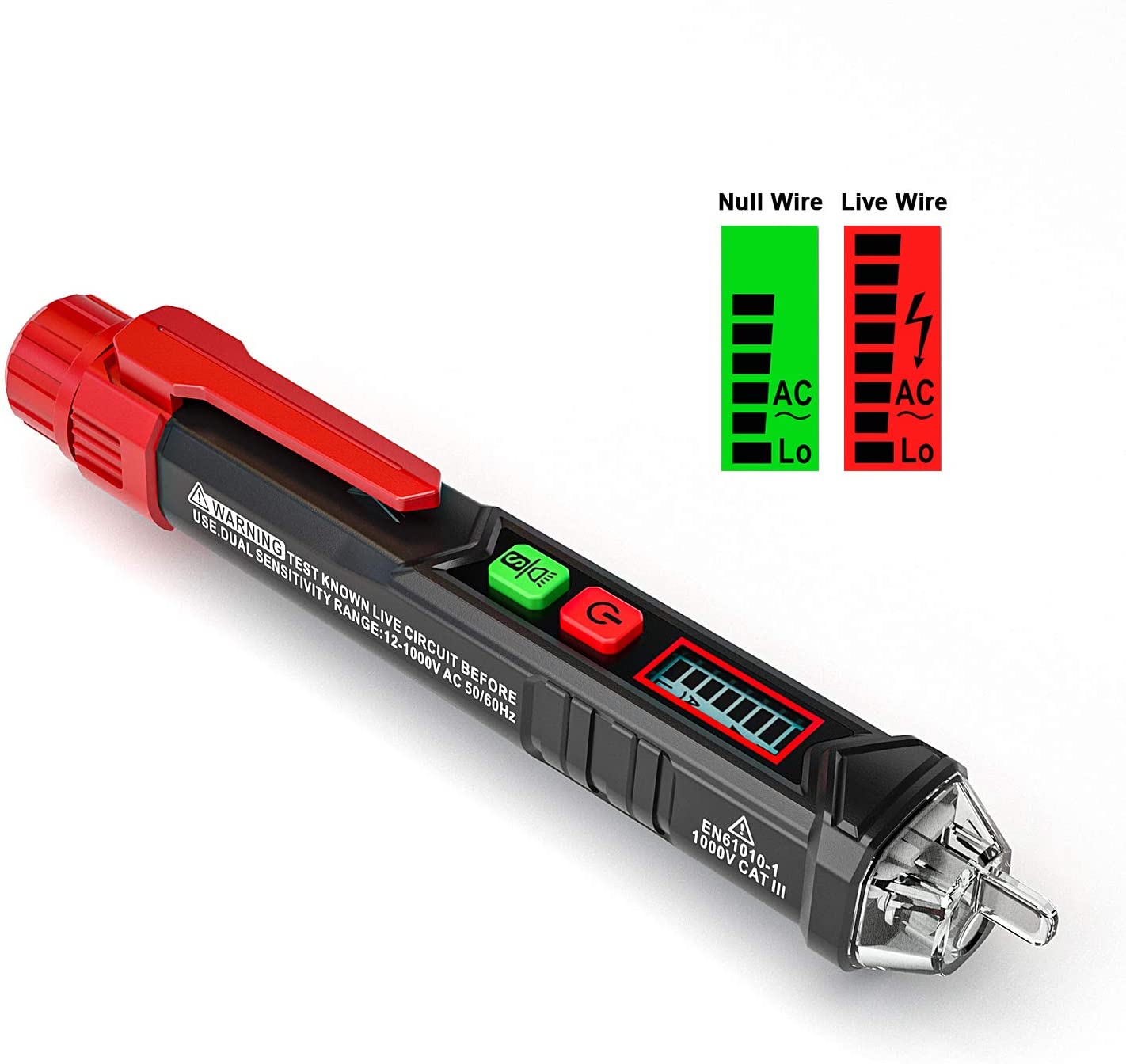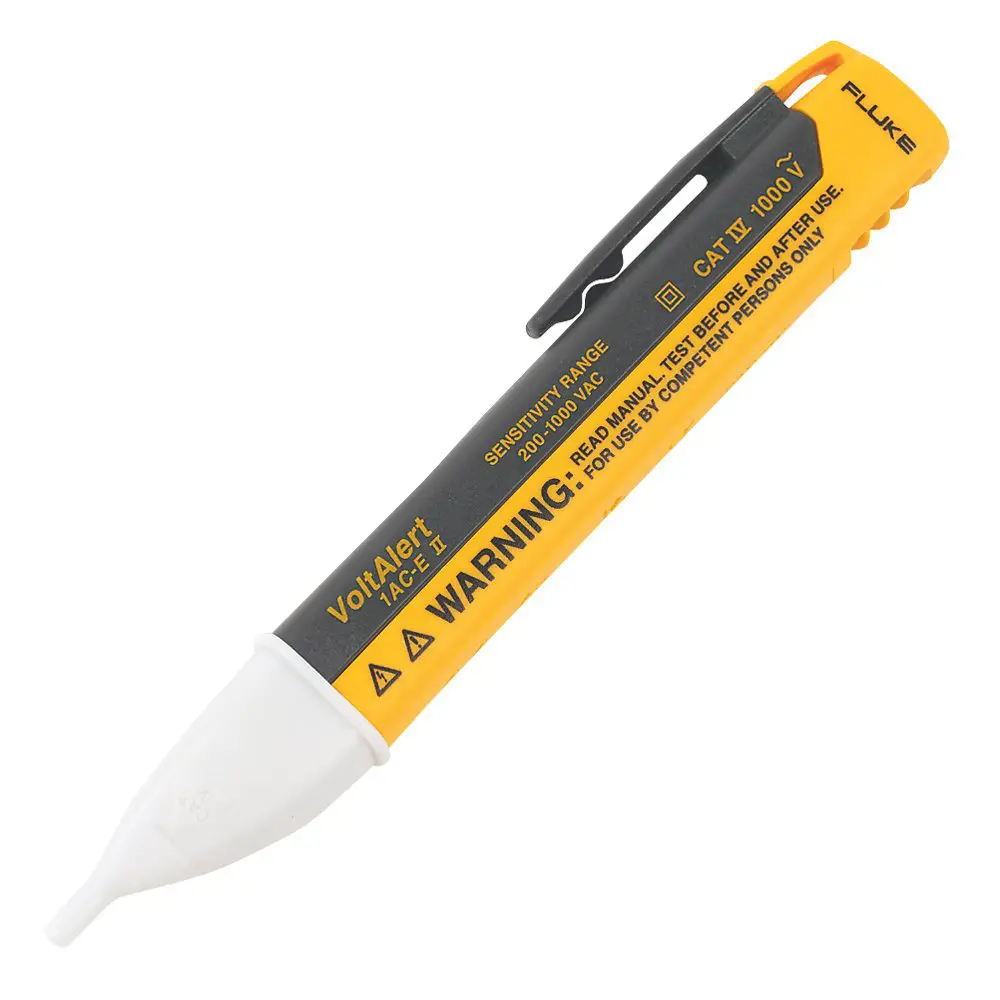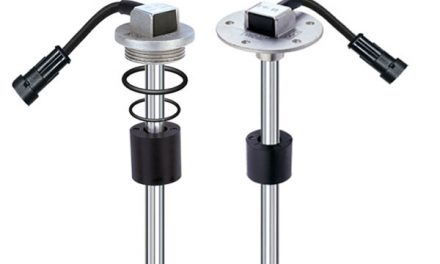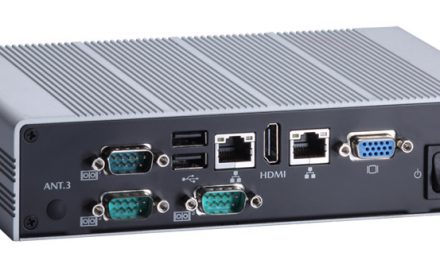Are you a DIY enthusiast? Do you frequently deal with mains power circuits? If the answer is a yes to both then you need a non contact voltage tester. This is because these devices help you to detect if there is current flowing through a wire very quickly without needing to remove the insulation. In this buying guide, we will explore the top eight best non contact voltage testers that are portable which allows you to carry them in your back-pocket with ease, come with bright LEDs to allow you to quickly see that a current is present and are very easy to use. Which of these non contact voltage testers is the best? We will give an analysis of each non contact voltage tester and this will help you make a judgment as to which non contact voltage tester will best suit your unique needs. In addition, we will include details about which non contact voltage tester is best for those buying on a tight budget.
Alternatively, just skip to the best non-contact voltage tester on Amazon.
Table of Contents
Best Non-Contact Voltage Testers Comparison Table
List of the 8 Best Non-Contact Voltage Testers
1. Klein Tools NCVT-2 Voltage Tester for Standard and Low Voltages
This is an excellent non-contact voltage tester for standard and low voltages. This device is made by Klein Tools. This manufacturer has a reputation of making excellent, long lasting tools. This is one of them. This non-contact voltage tester comes in a pen-like shape. The clip makes it easy for you to attach it to your jeans, t-shirt or clip board. It is made from non-conductive materials so you do not need to worry about getting electrocuted. It automatically detects and indicates low voltages (12 – 48V AC) as well as standard voltages (49-1000V AC). This makes it perfect for a wide variety of applications. It allows for non-contact detection of these low and standard voltages in cables, lighting fixtures, circuit breakers, socket outlets, switches, wires, and more. This allows for you to test for dead without having to remove the insulation. It has a high-intensity bright green LED which indicates when the tester is operational. This also aids in illuminating the workspace. It has the CAT 1000 Volt rating. This provides expanded operation and protection. This means that you do not need to worry about it failing to handle large voltages. It is made from lightweight durable polycarbonate plastic resin. This makes it quite easy to carry around. You can easily fit it into your pocket or handbag. It has a visual LED bar graph which indicates the presence of voltage. The higher the voltage sensed, the closer to the voltage source the device is. It comes with 9.8 ft. drop protection. This means that you do not need to worry about dropping this device. In addition, it comes with the auto power-off feature which helps to save your battery. Due to all these features, this is the best non-contact voltage tester.
This device has a few drawbacks. It cannot detect extremely low voltages. In addition, some people complain of rather inconsistent readings.
2. KAIWEETS HT100 Non-Contact Voltage Tester AC Electricity Detect Pen
This is a cheap non-contact voltage tester that is made by the company, KAIWEETS. This device is made from lightweight materials. Like most non-contact voltage testers, it comes with a convenient clip that you can use to help attach it to your t-shirt, shirt, short, etc. It is compact and will easily fit into your bag, handbag or pocket. It is CAT II 1000V and CAT IV certified. It can be used to test low and high voltages. When you use the low voltage mode, you can easily test devices in the range 12-1000V AC. When you use the high voltage mode, you can test devices in the range 48-1000V AC. It has a buzzer and an LED to give both visual and audio indications that the circuit you are testing has current flowing through it. It comes with a clear backlit LCD display. When you use it to test for dead, the LCD screen present will turn green if the circuit is indeed dead. When the circuit is live, the LCD screen will turn red and a thunderbolt icon will appear on screen, showing you that there is power. In addition, the LED will flash and the buzzer will give out a sound. It comes with an LED flashlight. This is a very handy feature when you are working in dimly lit environments. It uses two AAA batteries which come included in the package. These batteries are very easy to replace. It comes with the auto power off feature. This allows the device to save battery power. Due to all of these features, we have chosen this as the best budget non-contact voltage tester
This device has a few drawbacks. The manual is really bad. In addition, it takes a bit of time for it to accurately detect whether or not there is power.
3. Fluke 1AC II VoltAlert Non-Contact Voltage Tester
This is a non-contact voltage tester from the electrical tester manufacturing giant, fluke. If you are in the engineering field, you probably know that Fluke is the gold standard. Virtually any device from fluke will be perfect for most electrical testing and measurement applications. This device is made from non-conductive materials. This means that you do not need to worry about getting electrocuted and you do not need to wear gloves at all. It is able to detect voltages from 90 to 1000 volts AC. This makes it perfect for applications in which you need to test socket outlets, lamp holders, and cables. All you need to do is to touch the tip to a terminal strip, outlet, supply cord, etc. It comes with a red high intensity LED. To test for dead all you need to do is to touch the tip to the socket outlet or cable and the tip will glow red. The visual alert helps to ensure that you do not make any mistakes when checking if the circuit is live or not. It uses 2 AAA batteries which come included in the packaging. It comes in a very small size and is made from lightweight materials. It also comes with a convenient pocket clip. This makes it easy for you to carry it around. It comes with a self-test feature to check whether the device is working properly. The manufacturer shows great pride in his product and offers a 2 year warranty with the product.
This product has a few drawbacks. It cannot detect voltages below 90V AC. In addition, a few customers complained about the misleading product description in which it is said to have a buzzer, but in reality, it gives off no beep sounds at all.
4. Milwaukee 2202-20 Voltage Detector with LED Light
This is a simple lightweight and durable non-contact voltage tester from Milwaukee. This device looks rather minimalistic as it comes with a simple black and red color. It is made from lightweight materials and it will easily fit into your back pocket, jacket, or bag. It has a convenient clip that allows for you to easily clip it to your t-shirt, jacket or to a pair of shorts. It is made from highly durable materials with many customers praising it for this very important feature. It has buttons that are quite easy to push. You definitely won’t have a sore thumb or forefinger after using this device. It detects a wide range of voltages. This makes it suitable for a wide variety of applications such as detecting lamp holders, electrical cables, power adapters as well as socket outlets. It has a flashlight which uses a bright LED. This helps to illuminate your path and comes in quite handy when working in places with poor lighting. It has a green power on indicator which helps for you to see that the device is on and ready to work. It also produces a sound that helps you tell if the circuit you are testing is live or not. This feature is quite useful when you are working in environments with very bright light. It uses 2 AAA batteries that you can easily find anywhere.
This product has a few drawbacks. It is easy for the device to automatically switch on itself due to the toggle switch that is present that can be easily moved to the “ON” position when this device is in your pocket. In addition, a few customers complained that the sound produced by this device is a bit faint. This makes it unideal for loud and bright environments.
5. Greenlee – Detector, Voltage -Adjustable
This is a simple and rather weirdly designed non-contact voltage tester from Greenlee. It is designed and developed in the United States of America. This device is made from lightweight materials and will easily fit in your pocket. It comes with a convenient clip which allows you to easily attach it to whatever you are wearing. It tests a wide range of voltages i.e. it can test voltages from 5 to 1000V AC. This makes it very convenient for both low voltage and high voltage applications. It is quite versatile. It can be used for power wiring, lighting, thermostats and more. Its wide frequency range of 50Hz to 500Hz also makes it very versatile. It is CAT IV compatible at 1000V. It uses a single AAA battery that is very easy to replace when it eventually runs out. It has a low battery indicator. This helps for you to easily tell when the battery needs to be replaced and for you to replace it when need be. It allows for you to adjust the sensitivity to choose the right setting for you. It comes with a buzzer. This gives off a sound alert. This helps you to use this device in bright environments where the LED will be hard to see. The manufacturer offers a lifetime limited warranty. Due to all of these features, we have chosen this as the best non-contact voltage tester in the low & high voltage category.
This device has a few drawbacks. The mechanism used to change the sensitivity can easily be changed whilst in your pocket or your bag. This means that you will have to check the sensitivity each time you use it. In addition, the design is rather weird.
6. Sperry Instruments STK001 Non-Contact Voltage Tester (VD6504) & GFCI Outlet / Receptacle Tester (GFI6302) Kit
This is a non-contact voltage tester that comes with a GFCI outlet receptacle tester. This device comes in a bright yellow design with a splash of black. It comes with a high impact resistant ABS housing. This means that you do not need to worry if it slips from your hands whilst you are using it. It has soft over-molded rubber grips. These rubber grips make it easy to keep it in your hands even when they get a bit sweaty. This makes it ideal when you are working outside or in hot and humid environments. The non-contact voltage tester has the CAT III 300V, CAT III 1000V, and CAT IV 600V ratings. It can detect voltages in the range 50 – 1000V AC. It comes with a patented battery check feature. This helps for you to check whether the device is working properly before using it. It has a 360 degree visual indicator as well as a buzzer. This helps you to get indications that are suitable in dark & noisy as well as bright & quiet environments. The product also comes with a Ground Fault Circuit Interrupter (GFCI) outlet receptacle tester. This GFCI tester comes with bright color-coded neon lights for easy visual indications. These indicate 7 common wiring conditions. The device tests standard 3 wire and GFCI protected 120V outlets. The wiring condition legend is listed on the top and bottom of the tester. This GFCI tester was praised by almost all of the customers who bought it.
This product has a few drawbacks. The non-contact voltage tester was seen to be too sensitive. Many customers complained about it giving off many false positives.
7. Klein Tools NCVT-6 Voltage Tester
This is a multi-function non-contact voltage tester from Klein Tools. As you know, Klein Tools makes durable devices that are widely used by electricians nationwide. This device is made from nonconductive materials. This means that you can easily use it without the need for you to wear gloves. It comes with a convenient pocket clip. This makes it very easy to attach it to your jacket or your pair of trousers. It made from lightweight materials and comes in a rather compact size. This makes it very easy to carry it around. It is made from dust and water resistant materials so this makes it perfect for use in harsh conditions. It comes with audio and visual alerts. It also comes with a high-visibility reverse contrast display for better viewing in low light conditions. This allows for you to use this device in the bright sunlight and in noisy, dimly-lit areas. It has a visual LED bar graph. This LED bar graph detects and shows that the line you are testing is not dead. The brighter the graph is, the higher the voltage present is. It comes with a 66 foot laser distance meter. This helps you to measure the distance present through the use of the Class II laser that the device comes with. The device allows you to use a wide variety of units which include meters, inches, feet with decimals, and feet with fractions.
This device has a few drawbacks. A few customers complained that once you drop this device it will start to misbehave. In addition it does not come with a case which makes it easy for the device to get a few scratches when mixed with other tools.
8. Meterk Electric Voltage Tester Non-Contact 12V-1000V Voltage Detector Pen
This is a very cheap non-contact voltage tester from Meterek. This device is made to look like a pen, and comes with the clip which makes it easy to attach it to whatever you are wearing – a t-shirt, a shirt, etc. It is lightweight. This means that you can easily carry this device around without worrying about it taking up a lot of space. It is made from durable polycarbonate plastic resin. This material is wear resistant and drop resistant. This means that you do not need to worry about this pen accidentally slipping from your hands. It can test both low and high voltages. Its voltage range can be selected to either 12-1000V AC or 48-1000V AC. This allows for you to test your low voltage circuits with ease. It comes with a signal intensity indicator. This indicator shows when there is a low, medium and high test voltage. It comes with a low battery indicator. This helps for you to tell when the battery is running low and to order a replacement battery with speed. The battery is rather easy to replace – all you need to do is to open the back cover, remove the old batteries, insert the new batteries and you are good to go! It uses two AAA batteries that come included in the package. It also comes with a flashlight which is quite useful when you are in a dimly-lit environment. The manufacturer shows great pride and offers a 24 month warranty.
This product has a few drawbacks. A few customers complained about it giving off false positives. Others complained about the batteries running out rather quickly.
Best Non-Contact Voltage Tester Brands
The best non-contact voltage tester brands are Klein Tools, Fluke and Milwaukee. Klein tools makes excellent non-contact voltage testers that are lightweight, fit into your pocket or handbag and come with drop protection. Fluke is the gold standard when it comes to electrical testing equipment. You definitely cannot go wrong with Fluke. Milwaukee is another good brand that is well known for producing affordable yet effective voltage testing devices.
Best Non-Contact Voltage Tester
Klein Tools NCVT-2 Voltage Tester for Standard and Low Voltages
This is the best non-contact voltage tester. It is an excellent non-contact voltage tester for standard and low voltages. It allows for non-contact detection of low and standard voltages in cables, lighting fixtures, socket outlets, switches, wires and more. It has a visual LED bar graph which indicates the presence of voltage.
Here are the key features we liked about the non-contact voltage tester:
- Portable
- CAT 1000 Volt rating
- Bright green LED for illumination
- Auto power off
- 9.8 ft. drop protection
Best Budget Non-Contact Voltage tester
KAIWEETS HT100 Non-Contact Voltage Tester AC Electricity Detect Pen
This is the best budget non-contact voltage tester. It is made from lightweight materials which makes it easy to carry around. It has a buzzer and an LED to give both visual and audio indications that your circuit is not dead.
Here are the key features we liked about the non-contact voltage tester:
- Cheap
- CAT II 1000V and CAT IV certified
- LED plus LCD plus Buzzer present.
- Auto power off
- AAA batteries easy to replace
How Much Does A Non-Contact Voltage Tester Cost?
Non-contact voltage testers do not cost a lot of money. They are in the range 8-50 USD. The cheaper devices are usually made from brands that are not currently popular in the United States. These cost around 10 dollars. An example is the Meterk Electric Voltage Tester Non-Contact 12V-1000V Voltage Detector Pen.
Mid-range voltage testers cost around 20 dollars. These usually come with basic features and are made by some well-known brands. An example is the Milwaukee 2202-20 Voltage Detector.
The high end devices are around the 50 dollar mark. They usually come with additional features. These could be distance measurement tools, etc. They are usually from the big brand manufacturers. An example is the Klein Tools NCVT-6 Voltage Tester. There can be devices that are way above the 50 dollar mark. These are usually premium devices that are used by professionals. If you are not a professional, then it may not benefit you a lot if you buy them.
Why Do You Need a Non-Contact Voltage Tester?
Safety
Non-contact voltage testers allow for you to test for dead before working on a circuit. This is a very important feature as there are cases where there is poor labelling on the circuit breaker panel and you may turn of a circuit breaker and the circuit will still remain live. These devices help you to check whether the circuit is actually dead before you work on it.
Convenience
The non-contact voltage testers are very easy to use. All you need to do is to switch the device on and bring the tip near to a cable. This means that you can check if a particular cable is working or not without eve removing the insulation. This is a really innovative feature.
Multi-purpose
The non-contact voltage testers frequently come with other handy features. Some of them come with a flash light. This allows for you to illuminate dark areas and also test to see if the circuit is dead. This is a very handy feature when you are getting into dark places that have electrical circuits that are rarely monitored or attended to e.g. in ceilings.
Easy To Use
The non-contact voltage testers are very easy to use. You can easily train anyone to use them. All you simply tell the person is that if there is a red light then do not touch. This is very different from a digital multi-meter. This is a device that is used to test for various things, including checking whether the circuit is live or not. These devices are a bit difficult to use and need someone who is either interested in electronics or someone who is very willing to learn electrical content.
Types of Non-Contact Voltage Testers
There are two main types of on contact voltage testers. These are:
Capacitive Sensor Non-Contact Voltage Testers
This type of non-contact voltage tester uses capacitor coupling to detect an electric field and is capable of detecting energized conductors even when the circuit is incomplete. The individual touches the metal part of the tester. He provides a ground reference and allows the stray capacitance from the live conductor to flow to the ground. Once current flows to the ground, the non-contact voltage tester will indicate the presence of the voltage through the light, sound or both.
Magnetic Induction Non-Contact Voltage Testers
This type of non-contact voltage tester has a sensor winding at the tip. When the tip is placed in an electromagnetic field, a voltage is induced in the winding and the non-contact voltage tester will indicate the presence of the voltage through the light, sound or both.
Factors to Consider When Buying a Non-Contact Voltage Tester
Range
Different electrical circuits operate at different voltages. There are low voltage circuits which usually operate under 48V. There are also high voltage circuits that operate above 48V. You need a non-contact voltage tester that is suitable for your electrical circuit. For a typical home applications, you need a 48-600V non-contact voltage tester.
Warranty
When purchasing any device whether electrical or electronic, it is best to consider the warranty offered by the manufacturer. The warranty gives a good indication of the manufacturer’s confidence in his or her product. As a general rule of the thumb, products with longer warranties are made from better materials and last much longer than similar products that have shorter warranties.
Alerts
When working with electrical circuits, you will get exposed to different environments. There are some environments that have very bright light, and this may make it challenging to rely on the LED alone. In such cases, investing in a non-contact voltage tester with a buzzer which gives off sound will be of great benefit. It is generally a good idea to have a non-contact voltage tester which has a buzzer.
Portability
You need a non-contact voltage tester that is easy to carry around. This is because non-contact voltage testers are generally put in your pocket and you take it out when you want to use it. Having a non-contact voltage tester that is bulky will be a great disadvantage as it will be challenging to carry it around.
Sensitivity
Non-contact voltage testers which have adjustable sensitivity levels are usually better than those whose sensitivity levels cannot be adjusted. This is because there may be circuits in which you need to detect the voltage quickly. In such scenarios, you will simply turn up the sensitivity setting.
Build Quality
The non-contact voltage testers are probably going to find a temporary home in your pocket. This means that you can easily drop it if you have other things in your pocket and end up taking it out by mistake. You need to buy a product that comes with a solid build quality. In addition, you may use it in hot environments. In such environments you will sweat a lot. It will be best to have a non-contact voltage sensor that is both impact resistant and waterproof (sweat proof).
What is a Non-Contact Voltage Tester?
A non-contact voltage tester is an electronic device that allows you to test if a circuit has current flowing through it without removing the insulation. It provides a safe method of testing for dead.
How Does a Non-Contact Voltage Tester Work?
A non-contact voltage tester works by detecting the fields that are produced by AC voltages. These fields are present near the live conductors. This is why the device is able to test for the voltage without obtaining direct contact with the wire. In order to check if the circuit has no power (test for dead), the tip of the device is inserted into the socket outlet or it is placed near any conductor under test. It is important to note that the tester cannot test through a metal shielding or conduit. These devices use one of the two available principles of operation.
Capacitive Sensor Non-Contact Voltage Testers
This type of non-contact voltage tester uses capacitor coupling to detect an electric field and is capable of detecting energized conductors even when the circuit is incomplete. The individual touches the metal part of the tester. He provides a ground reference and allows the stray capacitance from the live conductor to flow to the ground.
When the non-contact tester is placed near a live conductor it a capacitive voltage divider network. This comprises of the parasitic capacitance between the sensor tip and the live conductor, and the capacitance between the sensor and the ground through the body of the user. Once current flows to the ground, the non-contact voltage tester will indicate the presence of the voltage through the light, sound or both.
Magnetic Induction Non-Contact Voltage Testers
This type of non-contact voltage tester has a sensor winding at the tip. When the tip is placed in an electromagnetic field, a voltage is induced in the winding and the non-contact voltage tester will indicate the presence of the voltage through the light, sound or both.
These types of non-contact voltage testers only indicate the presence of electrical current when the circuit is complete. This means that they will not indicate anything when there is an energized wire but with an incomplete circuit.
Non-Contact Voltage Tester FAQs
How Can I Check If My Device Is Working?
Most non-contact voltage testers come with the self-test function. Look for the self-test button, press it, and it will confirm whether or not your device is in good working condition.
Why Should I Buy A Non-Contact Voltage Tester?
Death by electrocution is painful. You can easily avoid this by getting a non-contact voltage tester. 40 US will get you a decent non-contact voltage tester.
Can a Non-Contact Voltage Detector Test for Polarity?
No it cannot. For this you will need to use a standard digital multi-meter.
What is a Dual Range Voltage Tester?
A dual range voltage tester is a non-contact voltage tester that allows for you to measure both low voltages (12-100V) and standard voltages (48-1000V). This allows for you to test both your low voltage circuits as well as your high voltage circuits.
Can I Use a Multi-Meter Instead?
Yes you can. A digital multi-meter is widely used for checking if there is a voltage. It is able to give the exact amount of volts present. Most digital multi-meters have the disadvantage that they do not allow for you to measure if an electrical circuit is live or not without removing the insulation. There are some multi-meters that are able to act as a non-contact voltage tester and even provide the exact voltage and current passing through a wire without removing the insulation. Such devices cost hundreds of dollars, and are not portable. As a result, it is best to just use a non-contact voltage tester.
Conclusion
In this article, we have explored the top 8 best non-contact voltage testers. We have given a thorough analysis of each non-contact voltage tester. We also included a comprehensive guide aimed at equipping you with the skills of identifying the best non-contact voltage tester to suit your unique needs. In addition, we included a list of comprehensive FAQs for your convenience.
Check out the best non-contact voltage tester on Amazon.

